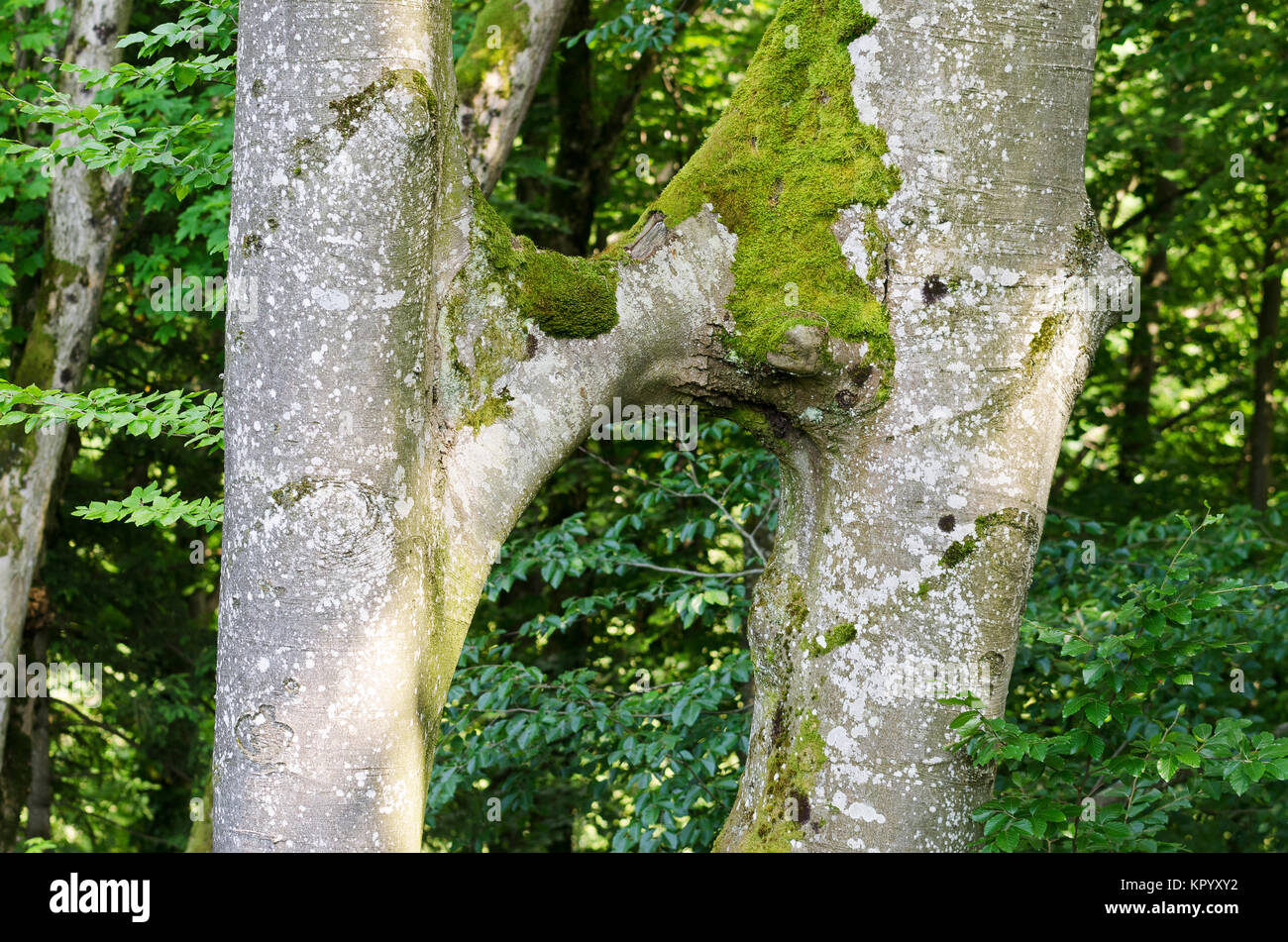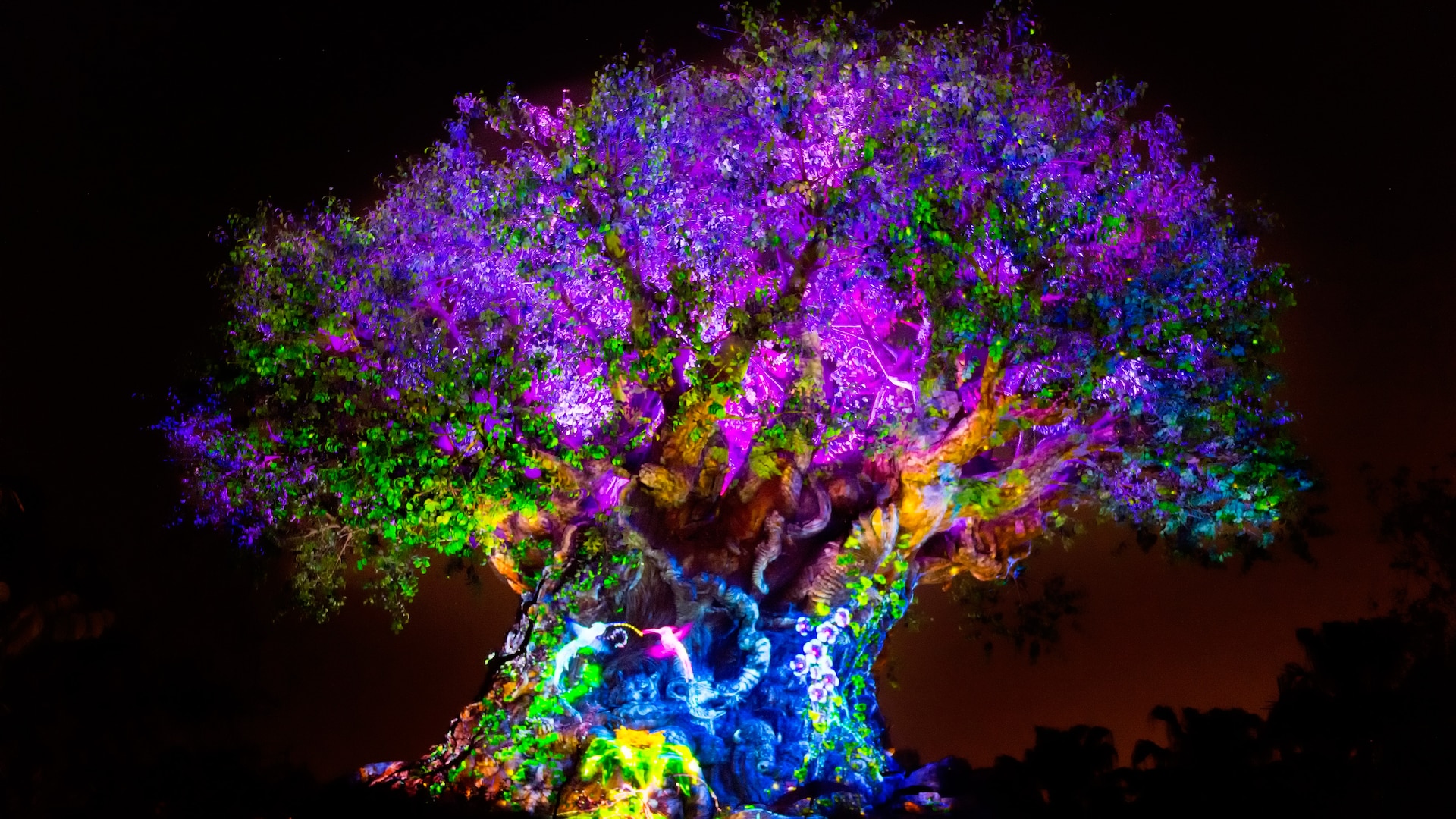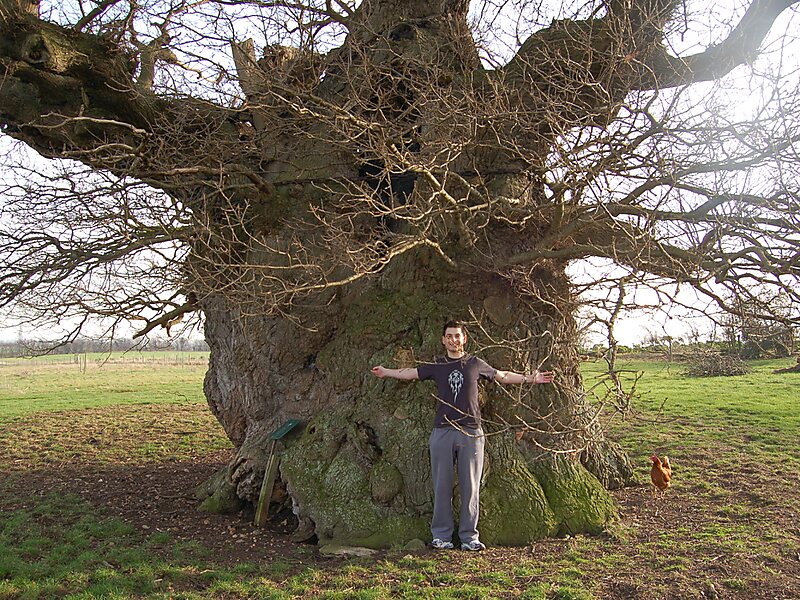A tree is a woody plant with an elongated stem, or trunk that supports the leaves and branches, , supporting leaves or branches, and used for many lumber purposes or even firewood, and specified by height, size and shapes of trees. The broad terms for woods includes tree ferns, bamboo, banana, taller palms, oaks and several tree’s species that grow in any part of the world. Some trees looks weird and strange because of its weird sizes and shapes, and every trees is covered or surrounded with thick barks that serves as protective barriers. The roots underground branches and spread out and serve as anchor of the tree extracting moisture and nutrients from he soil. While the branches are divided into smaller branches and shoots, which the shoot bear leaves and capture the sunlight energy anc can convert into the chemical energy by the photosynthesis, which can provide the food needed by the tree or any plan for their development and growth. Some trees the fruits and flowers are present, but in some trees, they have pollen cones or seed cones, and some trees, ferns produce spores instead. Trees tend to be long-lived some reaching several thousand years old. Trees have been in existence on the Earth for 370 million years. The trees play a significant role in reducing erosion and moderating the climate, and from the atmosphere, they remove the carbon dioxide and store carbons in their tissues in large quantities. One of the most biodiverse habitats in the world are the tropical rainforests, where the trees provide Shelter, shade, timber for construction, fuel for cooking and heating, fruit for food as well as having many other uses. Most forests are shrinking as the trees are cut and cleared to expand the agriculture lands for farming purposes, in parts of the world. Most of the trees paly the role in many world myths because of the tree’s longevity or old age and usefulness.
1) Banyan Tree or Strangler Tree
strangler tree
Strangler fig tree or Ficus watkinsiana, Iluka, Australia
The (Ficus watkinsiana) or Strangler fig tree, (Ficus Barbata ) also called as the Beard Tree, Watkins’ fig, Nipple fig or the Green-leaved Moreton Bay Fig is a hemiepiphytic fig endemic to Australia.
Ficus Benghalensis, Coral Gables
The Indian Banyan tree (Ficus benghalensis), is a large and extensive growing tree of the Indian continent, which produce propagating roots growing downwards known as aerial roots.
Ficus macrophylla
Ficus macrophylla
The Moreton Bay Fig tree or scientifically called ( Ficus macrophylla), is a large evergreen banyan tree of the Moraceae family native of the eastern coast of Australia.
2) Curtain Fig Tree

Curtain Fig
The White Fig tree ( Ficus virens) is a plant found in India, southeast Asia, through Malaysia and into Northern Australia, it is locally known as pilkhan and an-borndi in the Gun-diehmi language. Like many figs, its fruits are edible. Curtain Fig tree is one of the most famous specimens of this tree of the Atherton Tableland, near Cairns, a popular tourist attraction.
3) Ceiba Pentandra (Kapok Tree)
Ceiba pentandra ,Kapok tree, Honolulu
The Ceiba pentandra or Kapok fruit
The tropical tree of Malvales order and from the family Malvaceae (Ceiba pentandra). Kapok is the most used common name for the tree and may also refer to the cotton obtained from its seed pods. The tree is also called as the Java kapok, Java cotton, Silk cotton or ceiba, in which in Maya Mythology is a sacred symbol.

Ceiba Nassau tree since 1900
4) Ceiba Speciosa

Ceiba speciosa or Silk Floss Tree
Ceiba speciosa Tree trunk
Ceiba speciosa open pod (kapok silk pod)
The Ceiba speciosa or former Chorisia speciosa with common name silk floss tree, is a species of deciduous tree that grows on tropical and subtropical forests of South America. It has a host of local common names, such as palo borracho or in Spanish terms which means drunken sick. These strange tree belongs to the baobab and the kapok family. The Ceiba chodatii often called the same common names which also belong to the Ceiba genus.
5) Divi-divi Tree
Divi divi tree in Aruba
Divi divi tree with correct canopy (Caesalpinia coriaria)
The leguninous tree known as theCaesalpinia coriaria is a large shrub native to the Caribbean, Mexico, Central America and northern South America, with its common names include Divi-divi, Cascalote, Guaracabuya, Guatapana, Nacascol, One of the most popular Caesalpinia species and the national tree of Curacao and famous in Aruba is known as the Divi-divi. The substance tannins are extracted from Divi-divi pods for the leather production use.
6) Krummholz or Krumholtz formation
Example of Krummholz formation

Krummholz Pinus albicaulis in Wenatchee National Forest
Krummholz or Krumholtz formation which means crooked, bent, twisted and Holz, wood in German language krumm, also called Knieholz (“knee timber”) is a particular feature of subarctic and subalpine treeline landscapes. The continuous exposure to extensive freezing winds causes plants to become stunted and deformed, and making strange tree’s shapes. Under these conditions, trees can only survive where they are sheltered by snow covering or rock formations. As these trees continue to grow,the lower portion and the coverage becomes extremely dense near the ground.
Flag Tree formation
Flag Formed Red Spruce Dolly Sods Wilderness
Flag tree appearance on a Balsam Fir on Mount Washington (New Hampshire)
A flag tee or banner tree variation of this formation, where the branches on the windward side are killed or deformed by the almost constant strong winds, giving the tree a characteristic flag-like appearance. The tree’s lower portion of the tree is protected by snow cover or rocks, only the exposed upper portion may have this appearance, and this is common occurrence in Red Spruce trees of the highest peaks of the central, even southern Appalachian Mountains, and is commonly seen in the wind swept high peaks and plateaus of the Allegheny Mountains.
7) “The Tree Circus.”
Cube tree
Basket Tree
Two Leg Tree
Needle and thread tree
Axel Erlandson was a Swedish American farmer, born (December 15, 1884 – April 28, 1964) who shaped trees as a hobby, and opened a horticultural attraction in 1947 advertised as “See the World’s Strangest Trees Here,” and called the show “The Tree Circus. These strange trees appeared in the Ripley’s Believe It or Not! column of Robert twelve times. Axel Erlandson sold his tree circus attraction shortly before his death, and the strange trees were moved in 1985 t Gilroy Gardens.
Gilroy Gardens
Circus tree at Gilroy Gardens
Gilroy Gardens is a themed garden family,the Gilroy theme park inCalifornia, United States, and the current location of the famous world Axel Erlandson Circus Trees creation.
8) Fab Tree Hab
Fab Tree Hab
In the architectural fields and urban design the Fab Tree Hab , was supposedly ecology as the main driver for dwelling.
9) Arborsculpture or Pooktree
Pete Cook seated in a Pooktree in a living garden

Beech tree branch inosculation, Husband and Wife tree
Willow inosculation
Peace in Cherry tree
10) Topiary
Topiary Pearl Fryar’s Garden, South Carolina
Topiary Cottage Garden at Beckley Park, Oxfordshire
Topiary elephant
Topiary Squirrel at Rufford Hall
Topiary is the horticultural training of live perennial plants by clipping the foliage, twigs of the trees, shrubs and subshrubs to develop and maintain clearly defined shapes perhaps geometric or fanciful, and the term also refers to plants which have been shaped in this way. It is a living sculpture type as an art form. The commonly plants used in topiary are mostly woody, having small leaves or needle-like leaves evergreen, produinge dense foliage, and have compact and having erect and almost parallel branches tapering toward the top growth habits.
11) Jōmon Sugi
Jomon Sugi tree
Jomon sugi tree in Yaku Island, Japan
The large cryptomeria tree or yakusugi or known as the Jōmon Sugi located on Yakushima, a UNESCO World Heritage Site in Japan, and the oldest and largest of cryptomeria trees, which is nearly 2,000-year old growth cryptomeria trees on the island, and is estimated to be between 2,170 and 7,200 years old. The tree’s name is a referred to the Japanese prehistory, the Jomon period. Jōmon Sugi is accessible via the Kusugawa Hiking Path (east of Miyanoura) and the Arakawa Trail (starting at the Arakawa Dam) but requires a “four-to-five hour mountain hike” from the road nearest to reach. The Jōmon Sugi was partnered with Tane Mahuta tree in Waipoua Forest in New Zealand in April 2009.
12) Tāne Mahuta, New Zealand
Tane Mahuta, New Zealand
Tāne Mahuta is a giant kauri tree (Agathis australis) in the Waipoua Forest of Northland Region, New Zealand, which the age is unknown but estimated ages between 1,250 to 2,500 years old. In Maori, the kauri means Lord of the Forest (Tane) from the god’s name in the Maori pantheon. The tree is a remnant of the ancient rainforests subtropical that once grew on the North Auckland Peninsula. Some of the giant kauri trees are found Te Matua Ngahere nearby. Tāne Mahuta is the most famous tree in New Zealand, along with Te Matua Ngahere, which some think that these trees was discovered by the Westerners known to Maori people, and identified in the 1920s when contractors surveyed the present State Highway 12 route through the forest. Nicholas Yakas and other bushmen, who were constructing the road, also identified the tree in 1928. Tāne is the son of Ranginui the sky father and Papatuanuku the earth mother, according to Maori myth. Tāne separates his parents from their marital vows until the Sky, his father is high above mother earth. Then Tāne sets about clothing his mother with vegetation, then the trees of the forest and the birds are regarded as Tāne’s children. Tāne Mahuta was partnered with Jomon Sugi on Yakushima, Japan, in April 2009.
Te Matua Ngahere
Te Matua Ngahere Kauri

Te Matua Ngahere With Person
Te Matua Ngahere is a giant coniferous tree or called kauri (Agathis australis) in the Waipoua Forest of Northland Region, New Zealand, and the Maori tree means Father of the Forest.
13) Montezuma Cypress, Sabino, or Ahuehuete (El Árbol del Tule or The Tree of Tule in Spanish)
ArbordeTule or The Tree of Tule in Oaxaca,Mexico
The Tree of Tule or Tree of Life in Oaxaca Mexico
In Spanish, The Tree of Tule or known as El Árbol del Tule is a tree located in the ground church in Santa Maria del Tule, the town center in the Oaxaca, Mexican State, approximately 9 km east of Oaxaca city of on the road to Mitla. It is a Montezuma cypress (Taxodium mucronatum), or ahuehuete which means “old man of the water” in Nahuatl. The Tree of Tule and has the tree’s stoutest trunk of any trees in the world. In 2001 it was placed tentative list of World Heritage Sites on a UNESCO listings. El Arbol del Tule or The Tree of Tule, is still slightly larger than Giant Sequoia, the next most stout tree known, with a 8.98 m (29.5 ft) diameter
14) Giant Sequoia
Grizzly Giant or Giant Sequoia tree in Mariposa Grove
Giant Sequoia trees
Sequoiadendron giganteum (giant sequoia, giant redwood, Sierra redwood, Sierran redwood, or Wellingtonia) is the only living species in the genus Sequoiadendron, and one of the coniferous trees called Redwoods, together with the cost redwood (Sequoia sempervirens) and the dawn redwood (Metasequoia glyptostroboides). The sequoia is the common name use generally referring to Sequoiadendron giganteum which grows naturally only in groves on the Sierra Nevada western slopes Mountains of California.
General Sherman
The House Group Giant Forest
The House or The House Group is a group of Giant Sequoias monumental in Sequoia National Park Giant Forest in California, United States.
15) Baobab Trees
Adansonia grandidieri in Madagascar
Baobab Avenue in Madagascar
A genus of eight species of the tree Adansonia , is a native to Madagascar, one native to Africa mainland and the Arabian Peninsula, some growing in India and one to Australia.The African mainland Adansonia species also seen growing on Madagascar, but it is not a native of that island. A typical common name is baobab. Other common names include boab, boaboa, tabaldi, bottle tree, upside-down tree, and monkey bread tree. Michel Adanson, the French explorer and naturalist, is where the name derives, Adansonia, who described Adansonia digitata. In the Kenya and Tanzania coastal areas, baobab seeds are cooked with sugar, colored, and sold as a snack, and some use the baobab seeds as soup thickener, but can be also fermented into a seasoning, vegetable extracts when pounded, and can be roasted for direct consumption.
Baobab in Recife, Brazil
Baobab Adensonia Digitata

Baobab (Adansonia digitata) in Kruger National Park, South Africa
Baobab (Adansonia digitata )
16) Boab Prison Tree, Derby
Boab Prison Tree
Prison Boab Tree in 1960
The Boab Prison Tree, Derby is an Boab tree or Adansonia gregorii, a large hollow tree, found south of Derby, Western Australia. It is reputed to have been used as a prison cell for the Australian Indigenous prisoners in the 1890s on their way to Derby for sentencing. It is now a tourist attraction, and the tree is protected by fence today, to protect the property from vandalism.
17) Silk Cotton Tree covering Ta Phrom Temple in Cambodia
Ta Prohm temple covered with silk cotton roots
Ta Prohm Temple in Cambodia
Ta Prohm is built in the Bayon style, and the modern name of a temple at Angkor, Siem Reap Province, Cambodia, late in the 12th or early 13th centuries with former name known as Rajavihara. The trees growing out of the ruins are perhaps the most distinctive feature of Ta Prohm, and “have prompted more writers to descriptive excess than any other feature of Angkor.” Two species influencing, but sources disagree on their identity, the larger is either the ceiba pentandra or silk cotton tree or the Tetrameles nudiflora or thitpok, the smaller species is either Ficus gibbosa or strangler fig or Diospyros decandra or gold apple.
18) Tree Of Life

Tree Of Life at Disney’s Animal Kingdom
Tree of Life DAK
The fourth of four Disney theme parks is the Disney’s Animal Kingdom built at the Walt Disney World Resort in Bay Lake, Florida, and considered the largest single Disney theme park in the world. The Disney theme park is represented by The Tree of Life, a sculpted 145 feet, 50-foot-wide, sculpted artificial tree.
19) Tree of Life in Alfira Bahrain Dessert
Tree of Life in Bahrain dessert
Tree of life standing alone in the Al Hafirah Dessert, Bahrain (image credit: Brian McMorrow)
The Tree of Life (Shajarat-al-Hayat) in Al Hafirah dessert in Bahrain, is estimated 400 years old tree, about 32 feet high Prosopis cineraria tree, located about 1.2 miles or 2 kilometers from Jebel Dukhan, and stands on top the high sandy hill. The Tree of Life as the only tree growing in this dessert area became a local tourist attraction, with 50,000 approximately tourists every year and the tree often is damaged by graffiti carvings. It is also believed that this site is built for cults who practice ancient rites. Trees and Prosopis genus shrubs are extremely well adapted to arid environments with one of the deepest known root systems.
20) Chêne chapelle or Chapel Oak Tree
Chene Chapelle or Oak Chapel
In Allouville-Bellefosse, the 15m high with circumference base of 16m, the Chêne chapelle or known commonly as the “chapel oak” is an oak tree is found and visited by tourists, in Seine-Maritime, France. The Chapel Oak tree is estimated aged between 800 and 1,200 . years old. The Chapel Oak tree has hollow trunk, with a spiral staircase around the trunk as access to the chapel, that hosts two chapels, built in 1669; the Notre Dame de la Paix (“Our Lady of Peace”) and the Chambre de l’Ermite (“Hermit’s room”). The Chene chapelle oak is the pilgrimage site of the Assumption of Mary held on August 15.
Strange Old Oak Trees
Knorr-eiche oak, tree with many heads (image credit: www.bomeninfo.nl)
Bowthorpe Oak
Bowthorpe Oak in England

The Bowthorpe Oak
The Bowthorpe Oak is located in Bourne, Licncolnshire, England, and known as the oldest oak tree in England with estimated age of more or less 1,000 years old.

